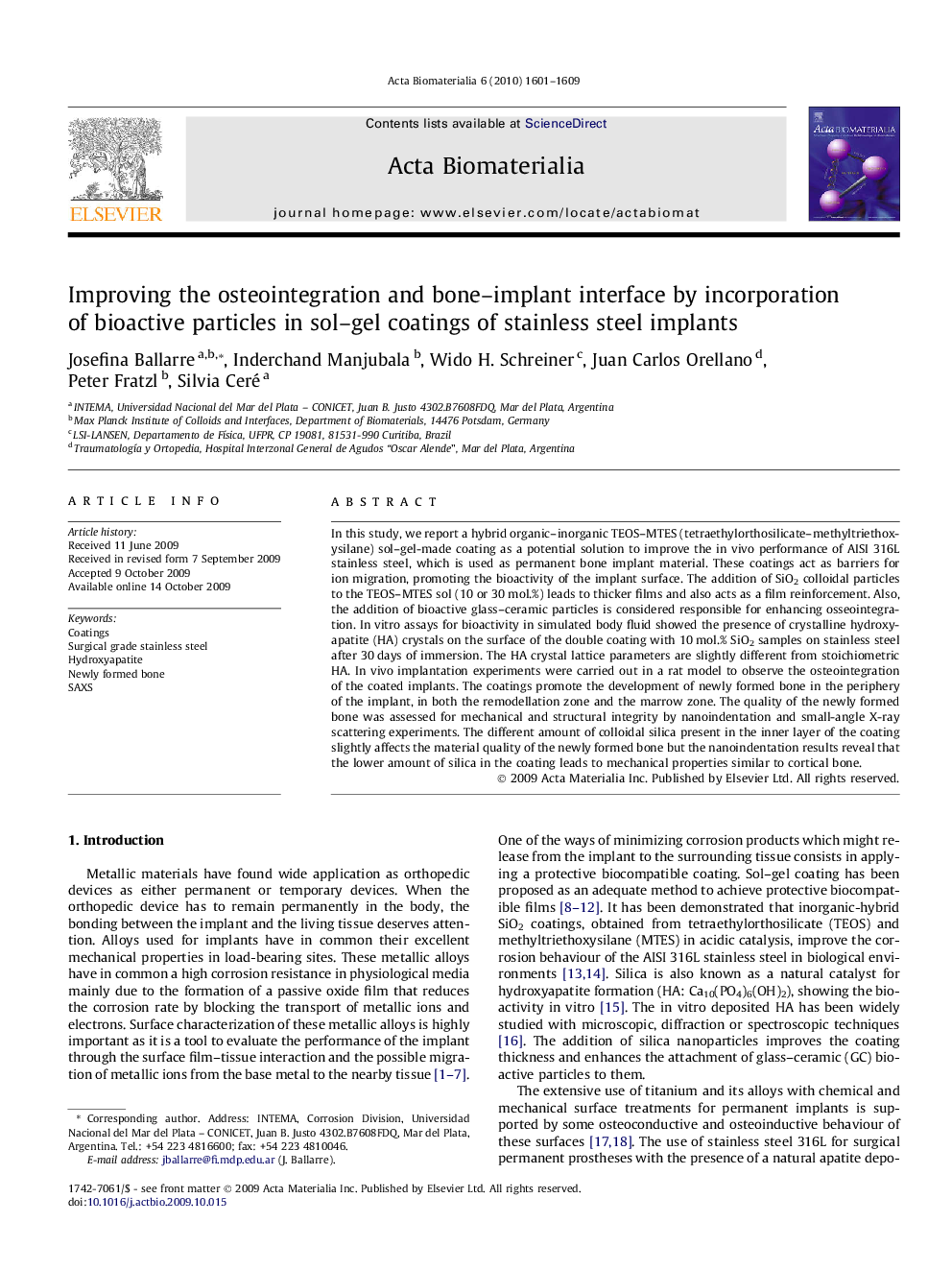| Article ID | Journal | Published Year | Pages | File Type |
|---|---|---|---|---|
| 2540 | Acta Biomaterialia | 2010 | 9 Pages |
In this study, we report a hybrid organic–inorganic TEOS–MTES (tetraethylorthosilicate–methyltriethoxysilane) sol–gel-made coating as a potential solution to improve the in vivo performance of AISI 316L stainless steel, which is used as permanent bone implant material. These coatings act as barriers for ion migration, promoting the bioactivity of the implant surface. The addition of SiO2 colloidal particles to the TEOS–MTES sol (10 or 30 mol.%) leads to thicker films and also acts as a film reinforcement. Also, the addition of bioactive glass–ceramic particles is considered responsible for enhancing osseointegration. In vitro assays for bioactivity in simulated body fluid showed the presence of crystalline hydroxyapatite (HA) crystals on the surface of the double coating with 10 mol.% SiO2 samples on stainless steel after 30 days of immersion. The HA crystal lattice parameters are slightly different from stoichiometric HA. In vivo implantation experiments were carried out in a rat model to observe the osteointegration of the coated implants. The coatings promote the development of newly formed bone in the periphery of the implant, in both the remodellation zone and the marrow zone. The quality of the newly formed bone was assessed for mechanical and structural integrity by nanoindentation and small-angle X-ray scattering experiments. The different amount of colloidal silica present in the inner layer of the coating slightly affects the material quality of the newly formed bone but the nanoindentation results reveal that the lower amount of silica in the coating leads to mechanical properties similar to cortical bone.
